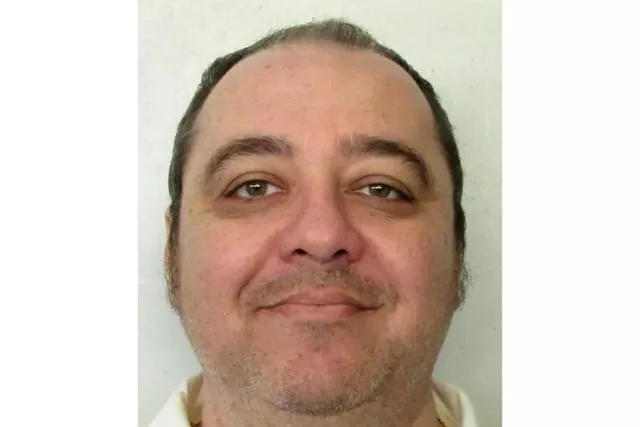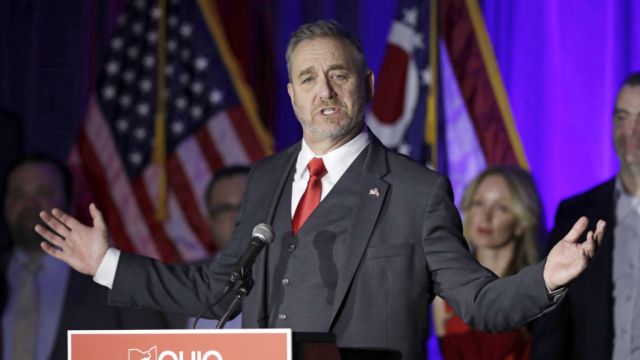Ohio’s Republican attorney general put his weight behind a legislative effort on Tuesday that would bring nitrogen gas executions to the state, ending a years long unofficial death penalty moratorium.
Attorney general Dave Yost made remarks in a news conference about a Bill sponsored by Republican state Reps Brian Stewart and Phil Plummer. It would require that the nitrogen hypoxia pioneered in Alabama last week be used in cases where lethal injection drugs are not available.
Ohio has not executed anyone since 2018. In 2020, Republican Governor Mike DeWine declared lethal injection “no longer an option”, citing a federal judge’s ruling that the protocol could cause inmates “severe pain and needless suffering”.
Mr Yost has expressed support for the nitrogen gas method used for the first time in Alabama last week, when convicted murderer Kenneth Eugene Smith, 58, was put to death with nitrogen gas administered through a face mask to deprive him of oxygen.
The execution took about 22 minutes. Smith seemed to remain conscious for several minutes. For at least two minutes, he appeared to shake and writhe on the gurney, sometimes pulling against the restraints.

State officials in Alabama said the process was humane and effective, while critics called it cruel and experimental.
“Perhaps nitrogen — widely available and easy to manufacture — can break the impasse of unavailability of drugs for lethal injection,” Mr Yost wrote on X, formerly Twitter, on Friday, the day after Alabama executed Smith.
“Death row inmates are in greater danger of dying of old age than their sentence.”
Ohio’s last execution was on July 18th, 2018, when Robert Van Hook was put to death by lethal injection for killing a man in 1985. His was the 56th execution since 1999.
The state has since faced challenges finding the chemicals for lethal injection.
Politicians of both political parties have consistently pushed Bills over the years to eliminate the state’s death penalty, including a measure introduced this session.
It is an option that Mr DeWine — who helped write the state’s current law, enacted in 1981 — has stopped short of supporting.
As time has passed, however, the governor has questioned the death penalty’s value because of the long delays that elapse between crime and punishment. He told The Associated Press last month that he was not prepared to announce whether he would support an outright repeal.
“I did make it clear a few years ago that we could not carry out executions in the state of Ohio under the current law,” he said. “There’s been really no movement in the state legislature to come up with a different way of execution.”
He said that would have been “the logical thing,” if support were there for continuing the practice.
Ohio has 118 men and one woman on death row, according to the most recent state report.
Three states — Alabama, Mississippi and Oklahoma — have already authorised nitrogen hypoxia as an execution method, with the governor of Oklahoma Kevin Stitton endorsing the method on Tuesday, but only in cases when lethal injection is unavailable.







